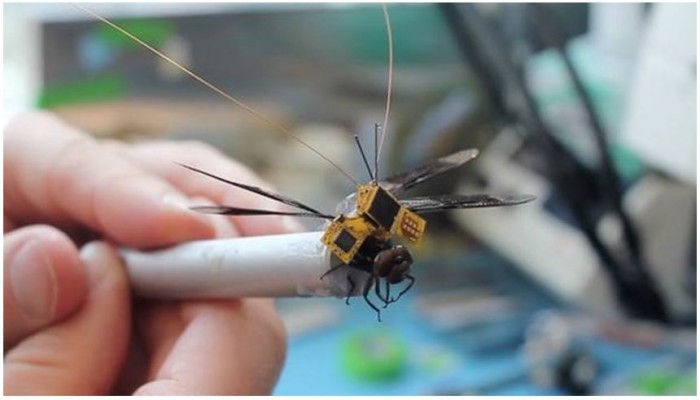The DragonflEye Project Wants to Turn Live Insects into Cyborg Drones
- In Military & Strategic Affairs
- 06:46 PM, Jul 28, 2017
- Anirban Mukherji
Drones of the next-generation may not just look like flying insects, rather, in reality, they may, in fact, be a living insect which can be controlled remotely by an operator through electronic signals.
Researchers at Charles Stark Draper Laboratory and Howard Hughes Medical Institute are working on an insect drone hybrid project - DragonflEye - trying to genetically modify a living dragonfly's nervous system so that it can respond to pulsations of light.
This unusual approach, scientifically known as optogenetic stimulation, can remotely control the insect's movement to make them do a range of activities like conducting surveillance, carrying payloads, or even assisting honey bees to be better pollinators.
The co-principal investigator at Howard Hughes Medical Institute, Anthony Leonardo says, a living dragonfly can be modified with sensors powerful enough to take readings or collect data, especially in remote areas, impossible for humans to go. According to researcher Leonardo, the onboard solar cells that power the dragonfly's electronic backpack can enable a pilot to remotely guide the insect's flight from a base station.
"The advantage we have in dragonflies is that we think we have found a very special class of neurons that implements sophisticated steering, much like the remote controller of a drone, for a specific behavior - prey capture," explains Anthony Leonardo. "The specificity of these neurons to prey capture is important. What I think we can do is show that these neurons will drive specific steering maneuvers during prey capture flights - maneuvers we control."
Leonardo states, though there has been no trial flight of the remote-controlled insect yet, scientists are making excellent progress in creating a connection between the dragonfly's brain cells and the electronic parts. "We have done genetic interventions and think we are close to having genetic access," he added. The ultimate goal would be to maneuver the insect drone to deliver something beneficial to the society, for instance, ensuring better pollination for a great harvest.
Co-principal investigator on the project, Jesse Wheeler says, Optogenetics is the method of implanting genes from the eye into parts of the brain that affect movement. Once done, the brain cells can then be manipulated with pulses of light to control movements. Jesse believes that using a live dragonfly is a more effective process than trying to design one from electronic components. "The dragonfly will eat and produce its own energy and is more efficient in its own avionics," Wheeler said. "We only need power for the navigation system. It makes the entire problem more manageable."
There's, however, one thing about the optogenetic stimulation technology that frightens many. Various reports suggest that there are already underground groups working to control the movement of insects so that they can be used for spying or other activities. Researchers at Yale University recently announced that they can turn a regular mouse into a ferocious predator using the optogenetic stimulation technology! It isn't difficult to envision the consequences if the technology falls into wrong hands.
The brighter side is, optogenetic stimulation technology, according to scientists, could help humans in unique ways. The technology powering the cyborg insects can be also useful in treating humans experiencing decreased mobility due to issues with their nervous system. Even though there's no confirmation yet, still, advanced research in optogenetics can possibly lead to medical innovations that can help people revive their mobility.







Comments